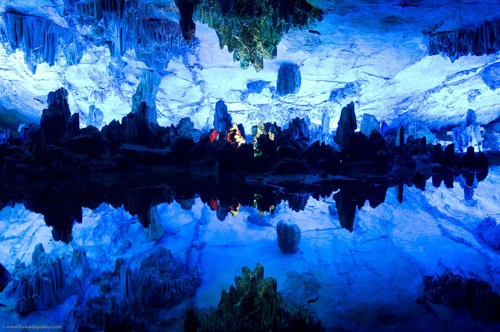Located in the northeast of Guangxi Zhuang Autonomous Region, Guilin is considered to be the pearl of China's thriving tourist industry on account of the natural beauty and historic treasures. Covering an area of about 27,800 square kilometers (10,734 square miles), the city is rather compact when compared with other leading cities in the country. However, situated within this area one may find green mountains, crystal clear waters, unique caves and beautiful stones. Major attractions include Elephant Trunk Hill, Li River, Reed Flute Cave and Seven-Star Park that boasts a Stone Museum where amazing geological finds are displayed. Believe that each of these places and many other attractions will leave you the lasting memories.
Reed Flute Cave
The Cave is just a 15 to 20 minute drive northwest of the downtown area. The caves serpentine depths wind about within Guangming Mountain and feature some remarkable rock formations. The cave itself is named for the green reeds growing inside, the same ones you might notice being used to make the slide whilstles sold outside the cave.
Fubo Hill
This fascinating karst upthrust reminds some people of a towering wave, poised to crash down into the river below; others believe the name comes from the rock formations interruption of the flow of the Li River. Either way, it is an impressive piece of geology, surrounded by rolling green hills and more karst peaks, water, caves, picturesque rocks, and gardens.
Elephant Hill
A hill well populated by fantastically shaped natural features named for various mythological figures, especially animals. One of the most famous is Guilins Elephant Hill, a striking natural arch that juts out into the Li River, bearing a clear resemblance to an elephant dipping its trunk into the water.
Seven Star Park
A great place for a relaxing stroll, this ancient park takes its name from seven karst peaks that correspond to the seven stars in the Big Dipper constellation.Covering.1.2 square kilometers (nearly 1,000 acres), the parks rocky landscape is riddled with a number of natural grottos and caves.


















